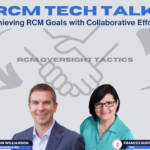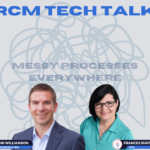In the intricate landscape of healthcare, Revenue Cycle Management (RCM) stands as a critical component, presenting a myriad of challenges for healthcare providers, administrators, and technology developers. This comprehensive exploration delves into the multifaceted nature of Healthcare RCM, examining its key elements and strategies for optimization.
Organizational Structures and Their Impact on Healthcare RCM
The effectiveness of RCM is significantly influenced by the diverse organizational structures within healthcare practices:
- Small private practices often operate with streamlined hierarchies, facilitating communication but potentially limiting resources.
- Larger organizations feature multi-layered management structures, including executives, mid-level managers, and RCM directors.
The physical separation of RCM departments in larger organizations can introduce coordination and consistency challenges, requiring careful management to maintain efficiency.
The Role of Technology in Healthcare RCM
Technology plays a pivotal role in shaping RCM efficiency and effectiveness. Automation and artificial intelligence (AI) tools offer promising solutions for streamlining workflows, potentially revolutionizing how healthcare organizations manage their revenue cycles. However, adoption challenges persist, including:
- Fragmented understanding of RCM across organizational levels
- Difficulty identifying decision-makers within complex healthcare structures
- Resistance to change and concerns about initial implementation costs
Realizing the full potential of technology in RCM requires overcoming these significant implementation barriers through comprehensive training, clear communication, and strategic planning.
Key Components and Optimization Strategies
Utilization Review and Case Management
Implementing robust utilization review and case management processes is crucial for optimizing resource allocation and minimizing unnecessary costs. Collaboration between clinicians, case managers, and payers is essential for balancing quality care delivery with financial considerations. This integrated approach ensures appropriate utilization of resources while maintaining high standards of patient care.
Price Transparency and Patient Education
Providing transparent pricing information enhances patient trust and understanding of healthcare costs. To improve patient education and engagement:
- Develop clear, accessible materials explaining insurance coverage, deductibles, and financial assistance options
- Implement user-friendly patient portals with detailed billing information
- Train staff to effectively communicate financial aspects of care to patients
This proactive approach to patient education can significantly reduce billing inquiries and improve overall satisfaction with the healthcare experience.
Revenue Integrity and Auditing
Maintaining revenue integrity is paramount for financial health. Regular audits are essential to identify coding errors, compliance issues, and areas for improvement. Key strategies include:
- Implementing internal controls and monitoring processes
- Conducting periodic comprehensive audits of billing practices
- Providing ongoing training for coding and billing staff
These measures ensure that healthcare organizations maximize their revenue potential while adhering to regulatory requirements.
Data Analytics and Performance Metrics
Leveraging data analytics is crucial for informed decision-making in RCM. Advanced analytics tools enable organizations to analyze RCM performance, identify trends, and make data-driven decisions. Important metrics to track include:
- Days in accounts receivable
- Denial rates and reasons
- Collection rates
- Clean claim rates
This data-centric approach allows for continuous improvement and optimization of RCM processes.
Strategic Partnerships and Innovation in Healthcare RCM
To stay competitive and efficient, healthcare organizations should form strategic partnerships with RCM vendors, consulting firms, or other healthcare organizations. Collaborating with payers and stakeholders to streamline processes and negotiate favorable contracts can lead to significant improvements in RCM performance.
Innovation in RCM can be fostered by:
- Cultivating a culture of continuous improvement
- Encouraging staff to identify inefficiencies and propose solutions
- Embracing emerging technologies such as AI and predictive analytics
These strategies can enhance RCM capabilities and drive operational excellence.
Regulatory Compliance and Risk Management
Maintaining regulatory compliance is non-negotiable in healthcare RCM. Developing robust compliance programs and risk management strategies mitigates legal and financial risks associated with billing errors, fraud, and regulatory non-compliance. Key focus areas include:
- Staying informed about changes in healthcare laws and regulations
- Implementing regular staff training on compliance issues
- Conducting internal audits to ensure adherence to regulatory requirements
This vigilance in compliance not only protects the organization but also contributes to the overall integrity of the healthcare system.
Conclusion
The intricacies of healthcare revenue cycle management demand a comprehensive approach that addresses organizational structures, technological advancements, and the dynamic relationships between providers and insurers. By implementing these strategies and continuously adapting to the evolving healthcare landscape, organizations can optimize their RCM processes, enhance financial performance, and ultimately provide better patient care.
As the healthcare industry continues to evolve, so too will the strategies for managing the revenue cycle. The ultimate goal remains achieving a more efficient, effective, and equitable system for all stakeholders involved. By embracing innovation, fostering collaboration, and maintaining a patient-centered focus, healthcare organizations can navigate the challenges of RCM and thrive in an increasingly challenging environment.











